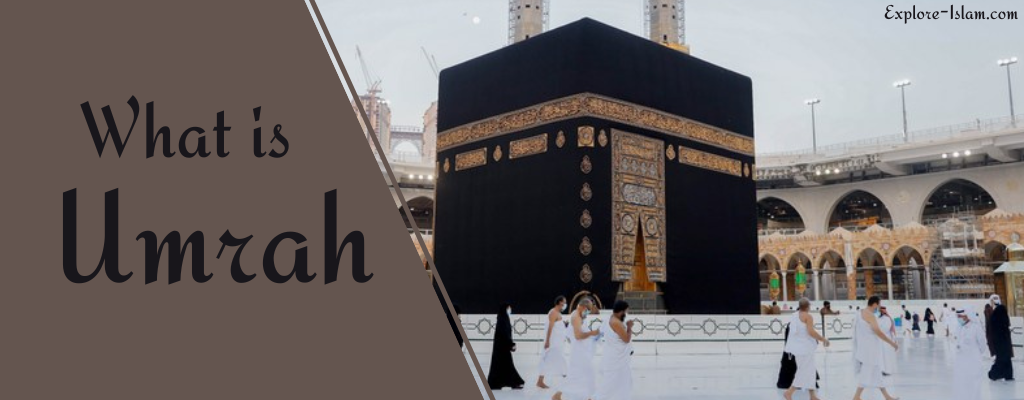You may have heard the term “Umrah” from the mouth of Muslims or people interested in Islam and curious to find an answer to the question: What is Umrah? Umrah is a religious pilgrimage to the holy city of Makkah in Saudi Arabia, performed by Muslims as a form of spiritual devotion. Unlike Hajj, which occurs once a year, Umrah can be undertaken at any time and involves a series of rituals, including specific prayers, walking around the Kaaba, and moving between two hills known as Safa and Marwah.
This article explores the definition of Umrah, its purpose, the steps involved, how it’s performed by women, the common supplications recited, and how long it typically takes. If you are curious to know, follow this article.
What Is Umrah in Islam?
Umrah is a significant act of worship in Islam that involves traveling to Al-Masjid Al-Haram (the Holy Mosque) in Makkah to perform specific rituals, including Tawaf—circling the Kaaba—and Sa’i, walking between the hills of Safa and Marwah.
The word “Umrah” in Arabic means “a visit”, and in the religious context, it refers to a pilgrimage to the holy site for the purpose of worship. Unlike Hajj, which is mandatory once in a lifetime and restricted to specific dates, Umrah can be performed at any time of the year.
This journey is not about idol worship or reverence to the Kaaba itself; rather, it is a way for Muslims to follow the example of Prophet Muhammad (PBUH) and express devotion to God alone. Umrah offers a powerful opportunity for spiritual renewal, humility, and drawing closer to the divine.
Read the 10 differences between Hajj and Umrah.
What is the Dua of Umrah?
There is no single fixed dua for Umrah, but various authentic supplications can be made throughout the journey. Upon entering Ihram, the pilgrim says, “Here I am, O Allah, to perform Umrah,” and recites the Talbiyah:
“Here I am, O Allah, here I am. You have no partner. Verily, all praise, blessings, and dominion belong to You. You have no partner.”
Between the Yemeni Corner and the Black Stone, it is Sunnah to say:
“Our Lord, grant us good in this world and good in the Hereafter, and protect us from the tourment of the Fire.” (Quran, 2:201)
These heartfelt duas reflect the purpose of Umrah: sincere worship and seeking closeness to Allah.
How Long Is Umrah?
Umrah does not have a fixed duration—it depends on completing its main rituals: Ihram, Tawaf, Sa’i, and cutting the hair. On average, Umrah can take between 1.5 to 2 hours, but this may vary depending on the time of day, crowd levels, and individual pace. During busy seasons like Ramadan or peak weekends, it may take longer.
How To Perform Umrah?
Umrah consists of four main steps:
1. Ihram – Make intention before crossing the Miqat, perform Ghusl, and wear proper attire (two white cloths for men, modest clothing for women). Ihram also includes avoiding certain actions like cutting hair or nails.
Read more: What is ihram?
2. Tawaf – Circle the Kaaba seven times, making du’a and dhikr throughout.
3. Sa’i – Walk seven times between Safa and Marwah, remembering Hajar’s journey and making personal supplications.
4. Halq or Taqsir – Shave the head (men) or trim some hair (women) to complete Umrah and exit Ihram.
Read more: How to perform Umrah?
How to Perform Umrah for Ladies?
Women perform the same Umrah rituals as men—Ihram, Tawaf, Sa’i, and Halq/Taqsir—with one key difference:
During Ihram, women wear their usual modest clothing and hijab instead of the two white unstitched cloths worn by men.
Read more: Female Ihram Rules
What is the History of Umrah?
Umrah was ordained by Allah through Prophet Muhammad (PBUH) as an act of worship. The sacred site, Al-Masjid Al-Haram, was originally built by Prophet Abraham and his son Ismael (peace be upon them) as a place of submission to Allah.
The rituals of Umrah trace back to the faith and obedience of Abraham, who was tested by Allah to sacrifice his son, and his wife Hajar, who showed immense trust in Allah when left in the desert with their son. Hajar’s desperate search for water led her to run between Safa and Marwah, where the miraculous Zamzam well appeared, sustaining them and attracting tribes to settle nearby.
Read also: What Is Zamzam Water?
What Is The Purpose of Umrah?
The primary purpose of Umrah is to submit to and worship Allah as He has prescribed. It is an act of devotion that reflects a Muslim’s faith and obedience.
While Allah’s wisdom is beyond full human understanding, Prophet Muhammad (PBUH) highlighted the great rewards of Umrah. Beyond worship, Umrah offers numerous spiritual benefits, including forgiveness, renewal, and closeness to Allah.
Read more: What Are The Benefits Of Umrah?
Conclusion
To conclude, Umrah represents a meaningful experience for Muslims seeking spiritual renewal and closeness to their faith. While it follows a clear structure, including rituals and prayer, its deeper purpose lies in the intention to worship and reflect. Whether performed by men or women, and regardless of the time of year, Umrah holds lasting importance in Islamic practice. Understanding its background, procedures, and significance offers a window into one of Islam’s revered forms of worship.
If you wish to learn more about Hajj and Umrah, subscribe to Explore Islam newsletter to reach the newest updates!

